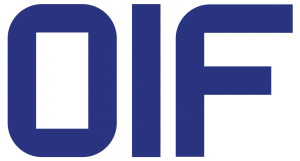OIF Launches Optical Projects to Enable Next Generation Modules
At the conclusion of the Optical Internetworking Forum’s (OIF) latest quarterly meeting, the organization announced that it has begun work on two optical interface projects, marking an evolutionary step to integrate optics as the industry moves to aggressively shrink module size. The IC-TROSA project would enable manufacturers to have a higher level of integration for transmit and receive optical components. The OIF’s CFP2-Digital Coherent Optics (DCO) project will work with other standards bodies to implement coherent modulations formats in CFP modules.
“The IC-TROSA project tackles much more than just a simple size reduction,” said Karl Gass of Qorvo and the OIF’s Physical and Link Layer (PLL) Working Group – Optical vice chair. “It addresses optical packaging in a way that isn’t done in high volumes today. We want to come to industry consensus in this pre-competitive environment.”
Integrated Coherent Transmitter-Receiver Optical Subassembly (IC-TROSA) is the evolutionary step that combines Polarization Multiplexed Quadrature (PMQ) Transmitter (Tx) and Integrated Coherent Receiver (ICR) components to create a single integrated optics package. The optical sub-assembly that supports high-bandwidth and high-order QAM operations is suited for data center interconnect, metro and long-haul applications. As module sizes decrease, current coherent optics components need similar size reductions to enable next generation multi-terabit switches, line cards, and transport. Density requirements for next-gen line cards, front-pluggable and future on-board 400G+ optical modules are driving the need for further integration and miniaturization.
The OIF’s CFP2-DCO project includes a way to build address management interface and identify registers necessary to talk to the DSP located in the module, specific to coherent modulation techniques. The CFP2-DCO is intended to be used for 100G, 200G or 400G applications for metro, long-haul and data center interconnections and it can support different formats such as DP-QPSK and DP-xQAM.
About the OIF
Launched in 1998, the OIF is the first industry group to unite representatives from data and optical networking disciplines, including many of the world’s leading carriers, component manufacturers and system vendors. The OIF promotes the development and deployment of interoperable networking solutions and services through the creation of Implementation Agreements (IAs) for optical, interconnect, network processing, component and networking systems technologies. The OIF actively supports and extends the work of standards bodies and industry forums with the goal of promoting worldwide compatibility of optical internetworking products. Information on the OIF can be found at http://www.oiforum.com.

